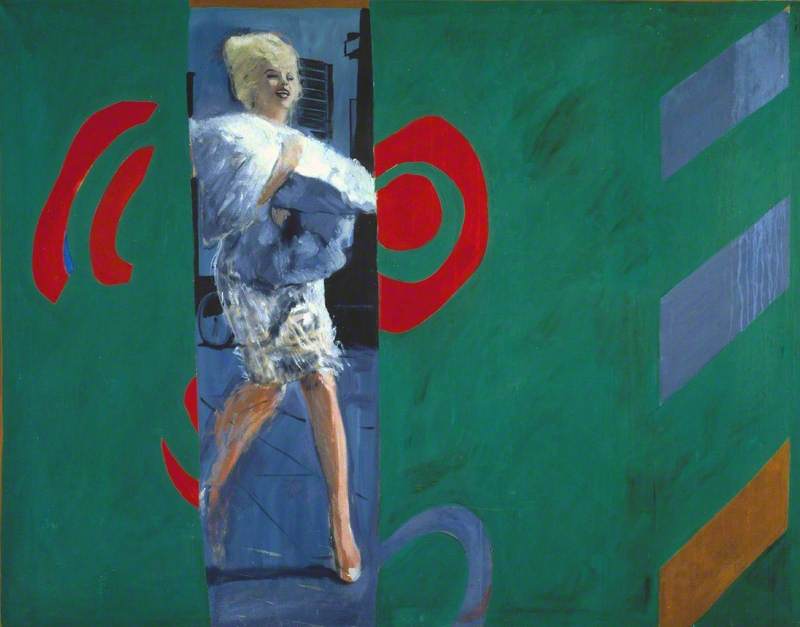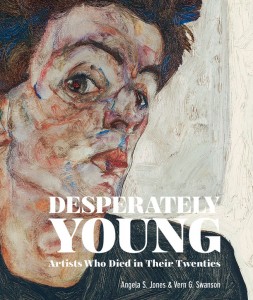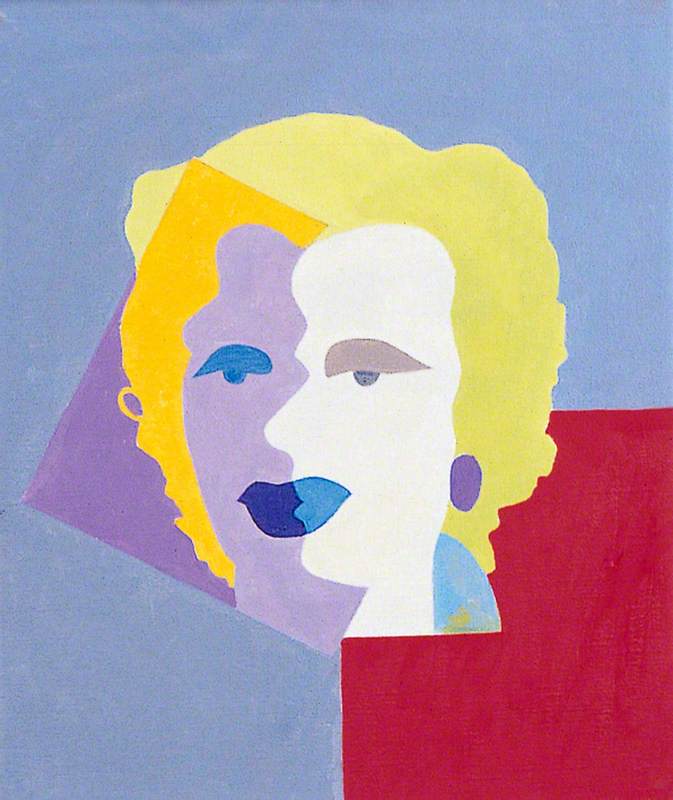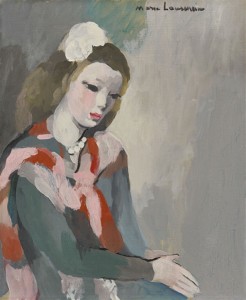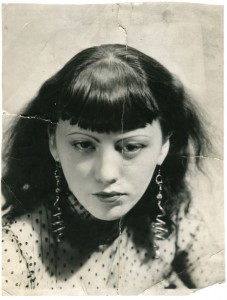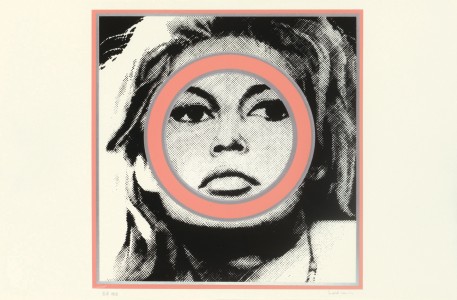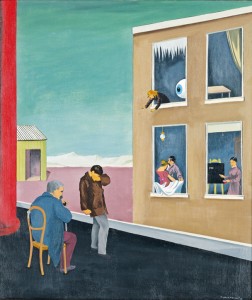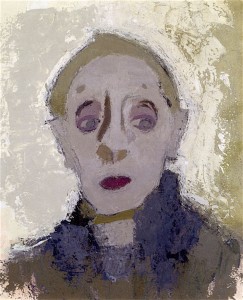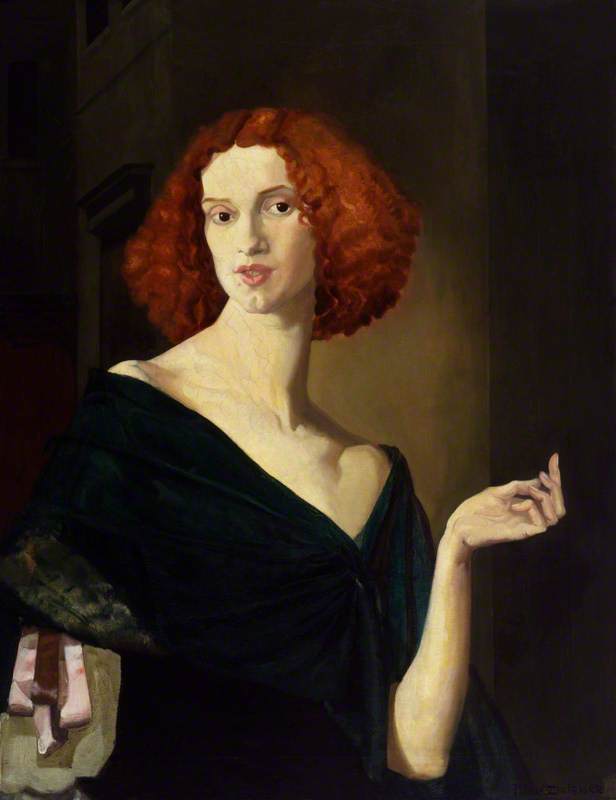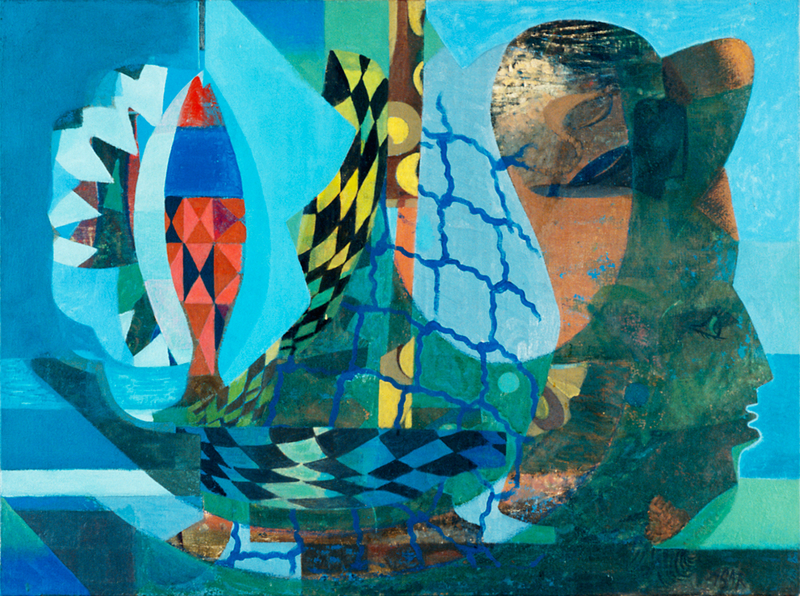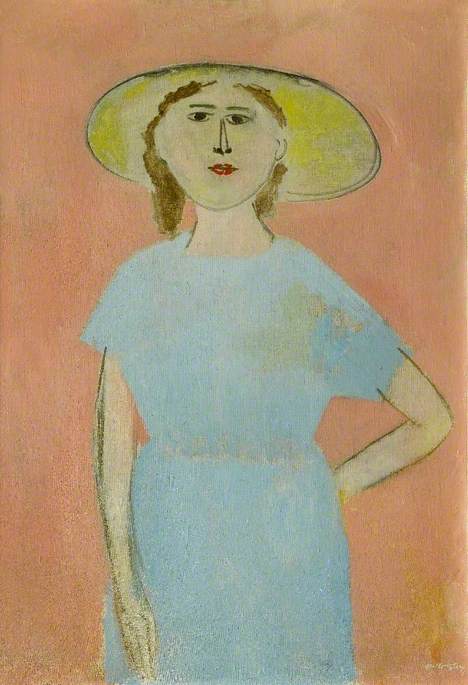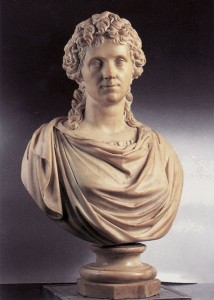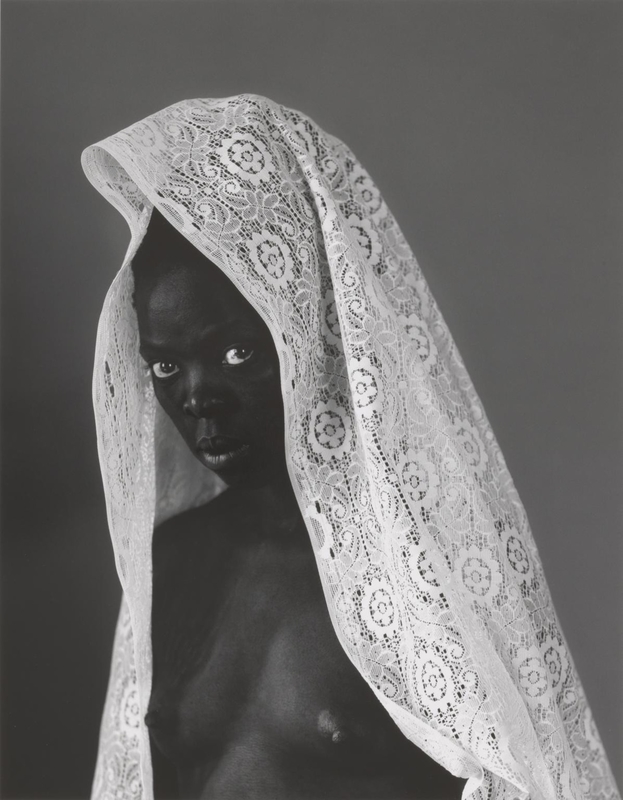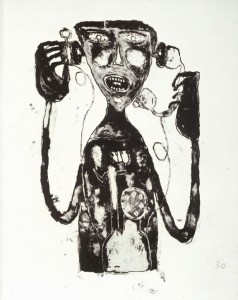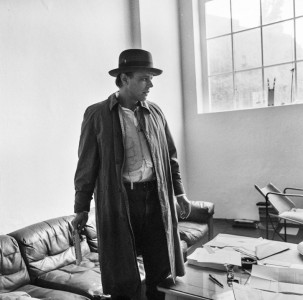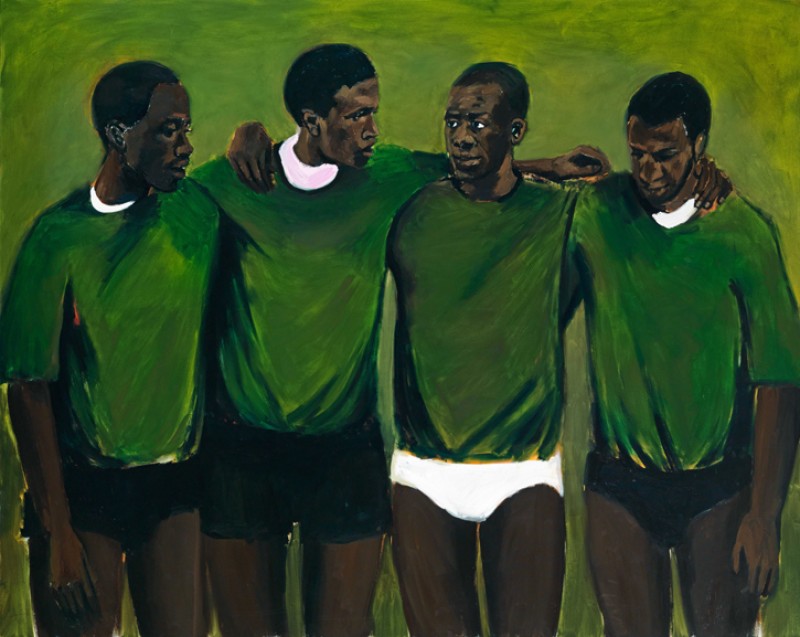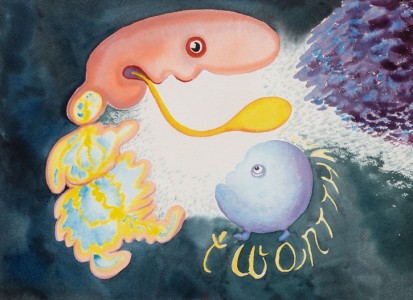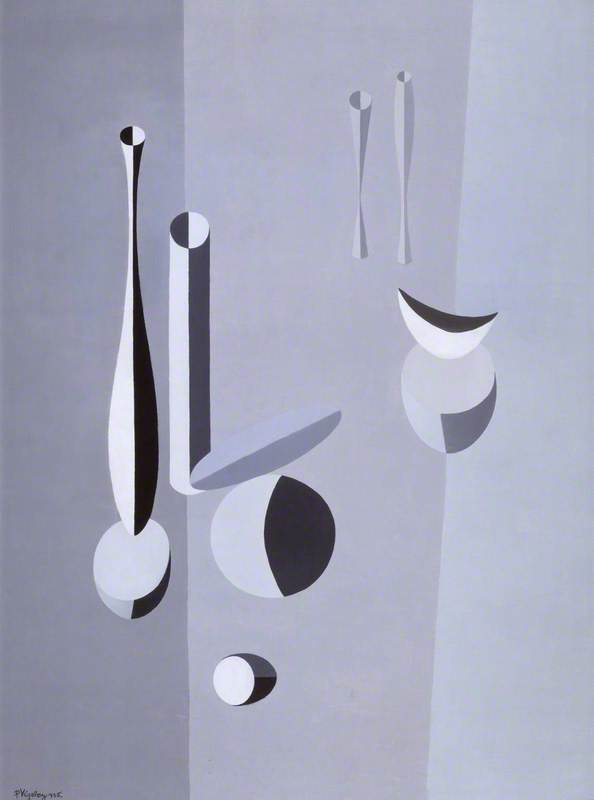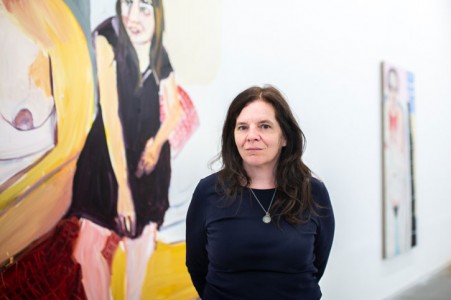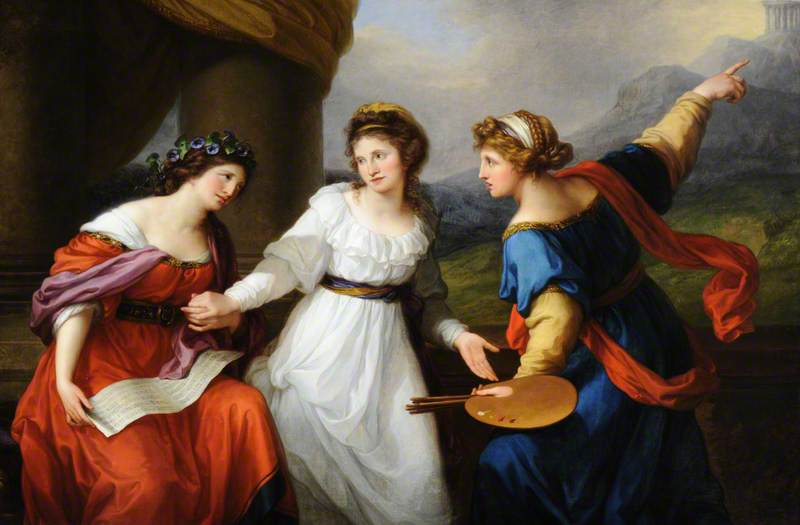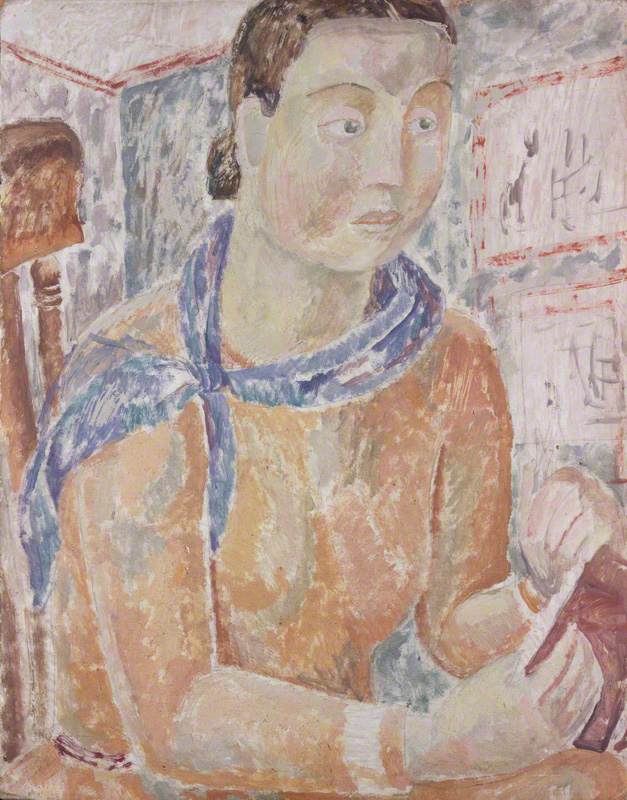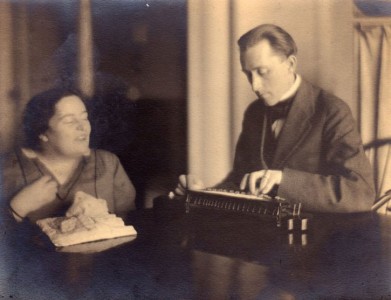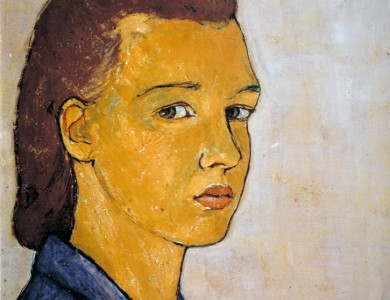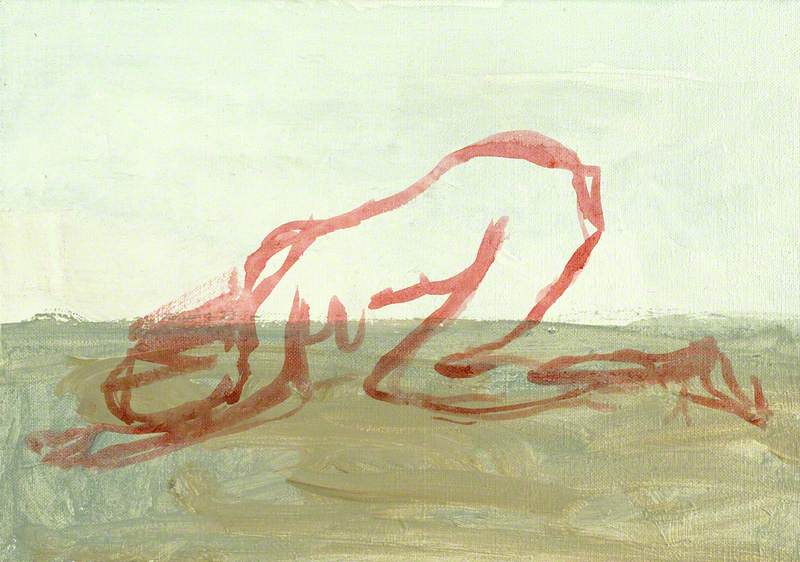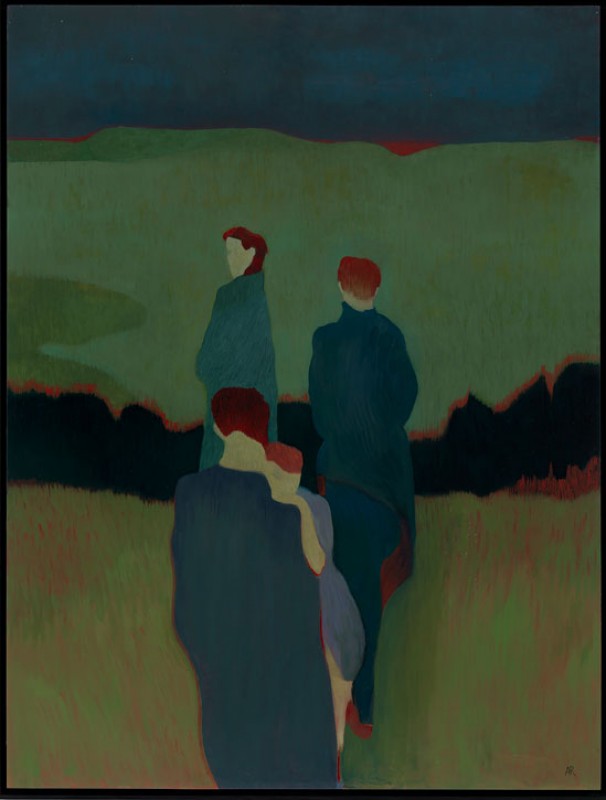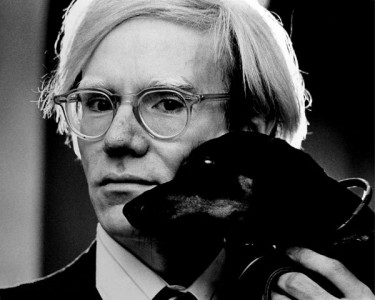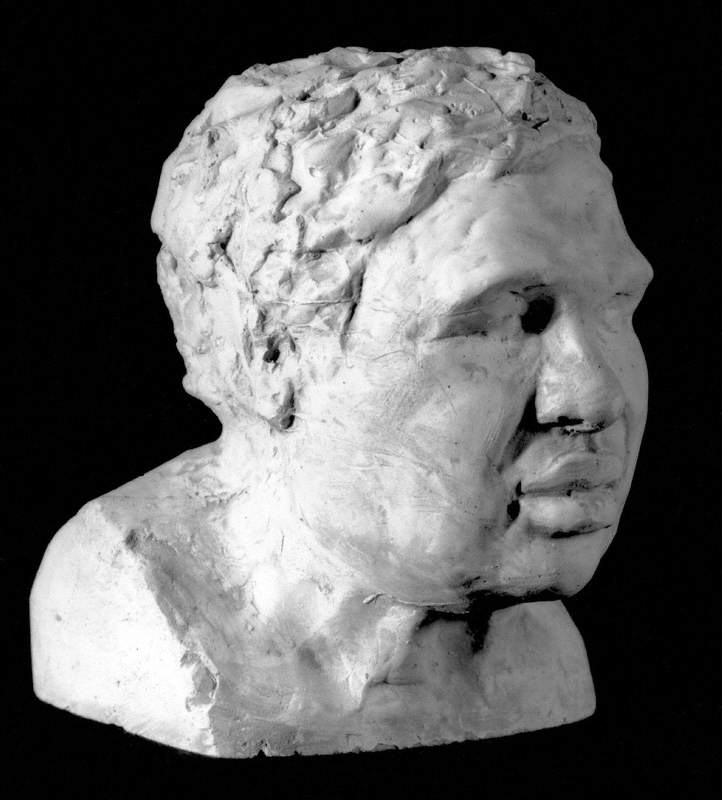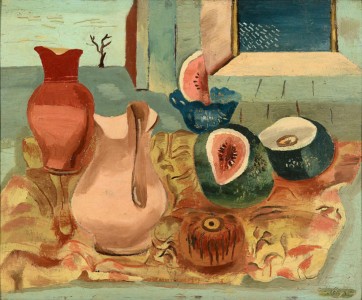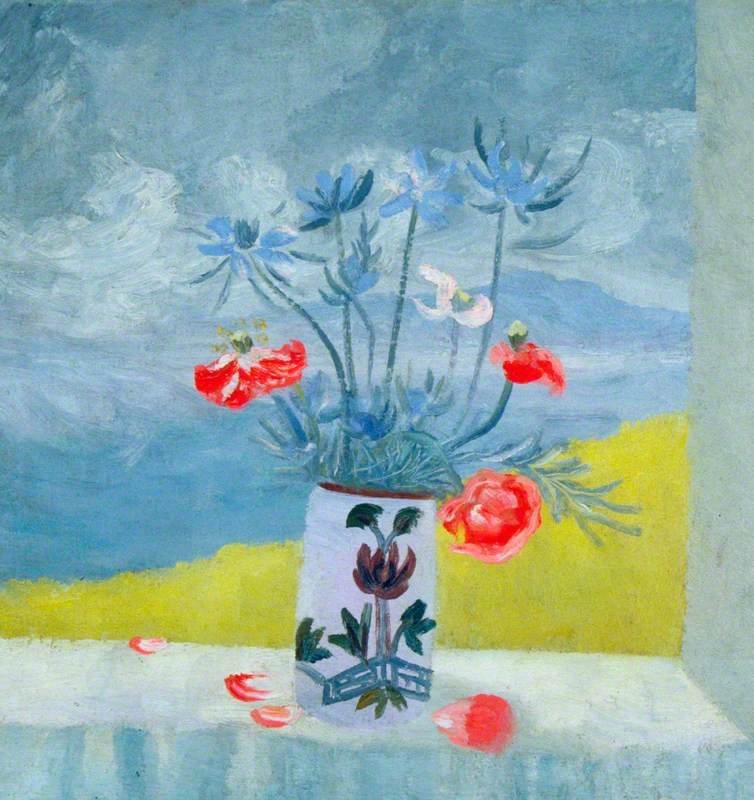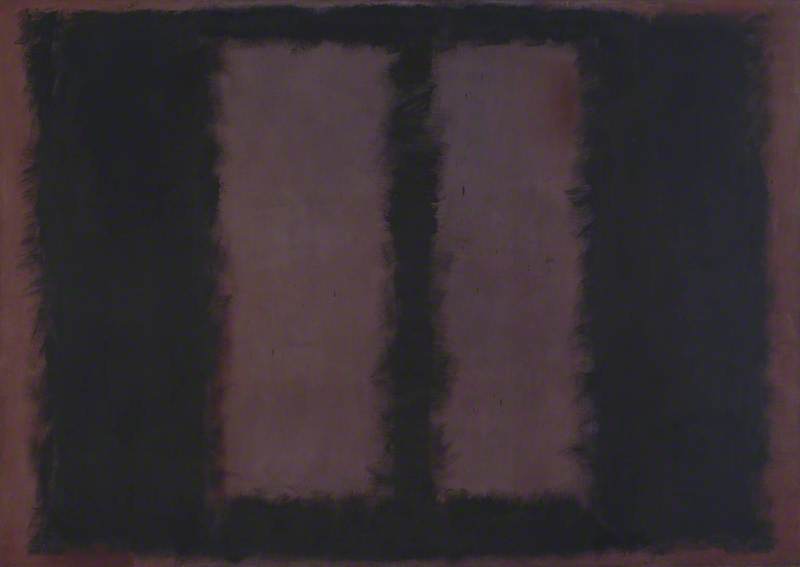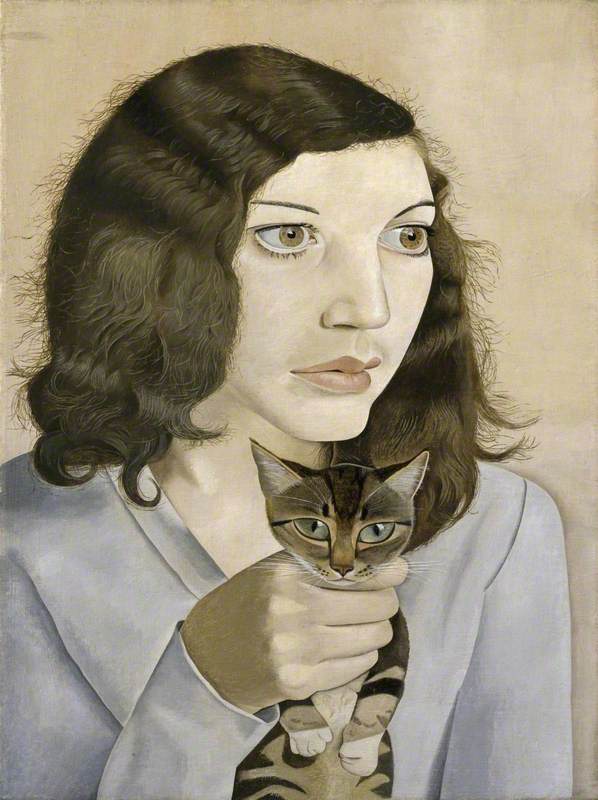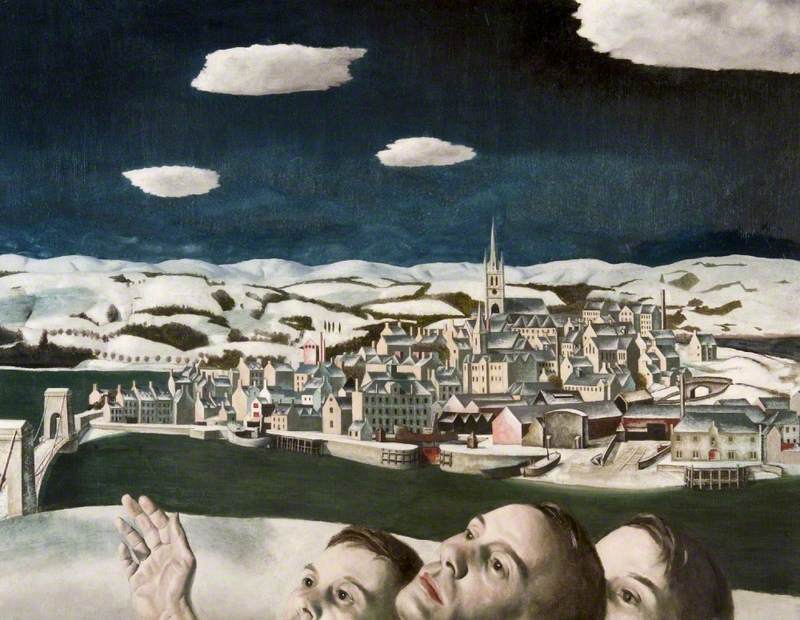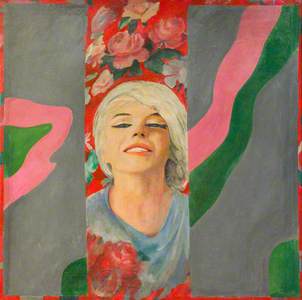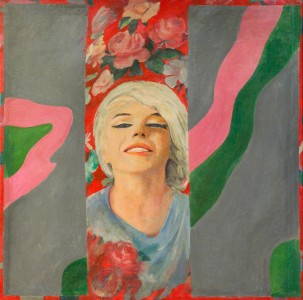Pauline Boty was born in 1938, went to art school in the late 1950s and gained public prominence in 1962, with her appearance in the BBC documentary Pop Goes the Easel (directed by Ken Russell), and through her association with the British Pop Art movement. She died just four years later, in July 1966, and yet within this tragically short career she offered a fascinating engagement with and commentary on artistic identity, contemporary femininity and sexuality, and the nature of modern fame.
This is powerfully expressed in Boty's 1963 painting The Only Blonde in the World, which is now on display in Tate Britain. The painting has two planes; the first, nearer the surface of the canvas, is a flat, green colour, which is split open to reveal a second, deeper perspectival space and the familiar full-length form of Marilyn Monroe. Taken from a press photograph for the film Some Like It Hot, Boty gives the figure an insubstantial, luminous presence that appears almost ghostly in the context of Monroe's death the year before.
The use of photographic images of popular cultural icons was a familiar protocol of Pop Art, however Boty's investment in the image of Monroe goes further and deeper. Boty assumed the identity of Monroe in her own life and played with its associations and meanings. She performed as Monroe in student reviews at the Royal College of Art and in a photograph by Geoff Reeve, published in 1962 in the RCA magazine ARK, she poses with her head lifted, her eyes closed and the broad, beautiful smile of a generic pinup.

© the copyright holder. Image credit: courtesy of the author
Pauline Boty with fellow RCA students, in 'ARK'
1962, photograph by Geoff Reeve
It is also the pose of Monroe as she appears in Boty's 1962 painting Colour Her Gone.
The painting is an elegy to Monroe and shows the depth of Boty's fascination and absorption in her image. The face on the canvas is that of Boty and Monroe and in the end, both seem to coalesce on the canvas.
As well as Monroe, other contemporary blonde film stars were drawn into Boty's repertoire of images and self-fashioning. At Wimbledon School of Art she was given the nickname 'the Wimbledon Bardot' because of her striking, blonde good looks.
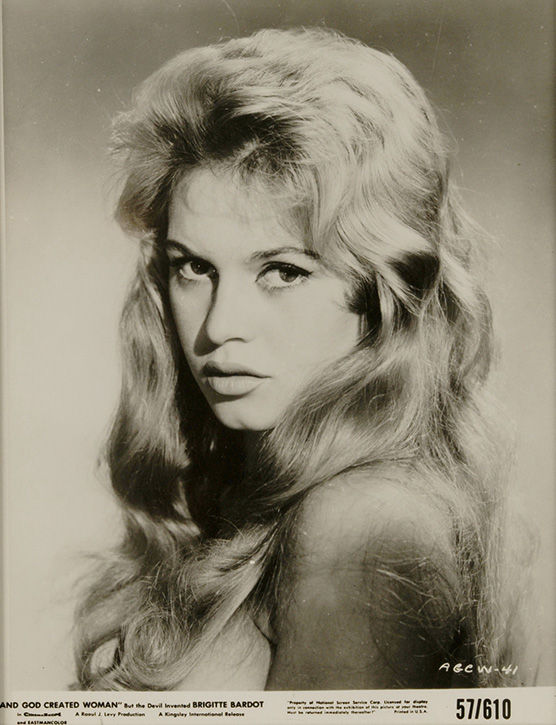
© the copyright holder. Image credit: courtesy of the author
Brigitte Bardot in 'And God Created Woman'
1956, publicity still
Born in 1934, Bardot was younger than Monroe and had a wilder, less polished glamour. For the French writer Simone de Beauvoir, she combined the qualities of femme fatale and gamine youth – she was a 'child woman' who represented a new disturbing eroticism. Bardot established her international reputation through the 1956 film And God Created Woman and was being absorbed into Pop Art iconography at just the moment that Boty was finishing at Wimbledon and moving on to the RCA. The Wimbledon Bardot was about to become one of the leading figures of the British pop scene.
At a moment of major social changes in Britain and when women were reasserting their sexual agency, Boty was to spend her brief career exploring female identity and pleasure as well as her own image as artist, actor and model.
View this post on Instagram
The title 5-4-3-2-1 refers to the theme tune of the pop television show, Ready Steady Go, which was broadcast on Friday nights on the ITV television network. The programme had a modern pop aesthetic, was relentlessly youthful and included live performances; Boty and fellow artist, Derek Boshier, were selected to be part of the studio audience, dancing on camera. The laughing face in the bottom left corner of the canvas resembles Cathy McGowan, one of the presenters of the show, although it surely represents joyous modern femininity more generally.
For young women such as Boty, who were in the vanguard of contemporary culture, advanced femininity was about fashion and sexuality. Sexual liberation and the expression of sexual pleasure was a challenge to mainstream British society and a fundamental claim to a modern, liberated female identity.
5-4-3-2-1 appears again in one of a number of photographic portraits of Boty by Lewis Morley.
View this post on Instagram
The portrait captures Boty's persona as a fashionable pop artist. Standing in her studio and surrounded by a wall of her collaged images and her canvases, she is the epitome of a 'sixties blonde'. Dressed in calf-high white boots, dark stockings and a boldly patterned shift dress, she lightly supports two of her recent works. She is both an artist and demonstrates the type of femininity that is evoked in the two canvases: 5-4-3-2-1 and the early version of Scandal – her portrayal of the public controversy surrounding Christine Keeler and government minister, John Profumo.
In the ten years or so during which Boty established her art, she produced a powerful body of work that explores the themes of female identity, modernity and representation and that seeks to evolve a pictorial language for the expression of female desire and sexual pleasure. As such, her work is rooted firmly in 1960s feminism and the belief in individual liberation as a form of radical politics. It was not always easy for women – social demands were multiple and contradictory and many women beyond the cultural elite of the metropolis felt like bystanders rather than participants in the swinging sixties. For a short, dazzling time, however, Boty articulated the visual and personal possibilities for women in Britain in the post-war era.
Lynda Nead, Pevsner Professor of History of Art at Birkbeck, University of London
Join Lynda Nead for the Paul Mellon Lecture series 'British Blonde: Women, Desire and the Image in Post-War Britain'. These lectures look at post-war Britain through changing styles of femininity, and focus on women from Pauline Boty to Diana Dors to Barbara Windsor.
The lectures will be hosted at the V&A from 18th October 2023 for five weeks. Book tickets now.
